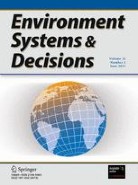 Professor Alexander Vaninsky, a long-time economics instructor at the Stamford Campus, recently published the article “Multiobjective restructuring aimed at green economic growth” in Environment Systems and Decisions (February 2021) https://rdcu.be/ch3UZ
Professor Alexander Vaninsky, a long-time economics instructor at the Stamford Campus, recently published the article “Multiobjective restructuring aimed at green economic growth” in Environment Systems and Decisions (February 2021) https://rdcu.be/ch3UZ
ABSTRACT
This research introduces an approach to the structural optimization of national economies resulting in green economic growth. This study considers the comparative advantages of the sectors of the economy in the final product ratio, energy intensity, and carbonization of the gross output. The input–output model is transformed to a structured form, and the projected gradient of the gross domestic product (GDP) is derived. Factorial models of energy consumption and carbon dioxide (CO2) emissions are developed and used to obtain the projected antigradients of these indicators. Each of these vectors determine the locally
optimal structural change for each dimension. Their components are found to be proportional to the sectoral deviations from the national average, thus revealing a sectorwise comparative advantage or disadvantage. This observation allowed us to characterize these components as Ricardian gradients. Although it is not possible to move in each of the three vectors concurrently, it is possible to direct the economic restructuring to make the least possible acute angles with each vector. Thus, the locally Pareto-optimal vector of structural change is formed. At each moment in time, the system is directed to move alongside this vector or by the boundary. The suggested approach is applied to simulate the economies of China and the United States. The obtained results reveal that the suggested changes in the structure of the gross output simultaneously allowed for an increase in GDP, a decrease in energy consumption, and the mitigation of CO2 emissions. Applications to international cooperation and trade are discussed.
 Professor Alexander Vaninsky, a long-time economics instructor at the Stamford Campus, recently published the article “Energy-environmental efficiency and optimal restructuring of the global economy” in the journal Energy (June 2018).
Professor Alexander Vaninsky, a long-time economics instructor at the Stamford Campus, recently published the article “Energy-environmental efficiency and optimal restructuring of the global economy” in the journal Energy (June 2018).